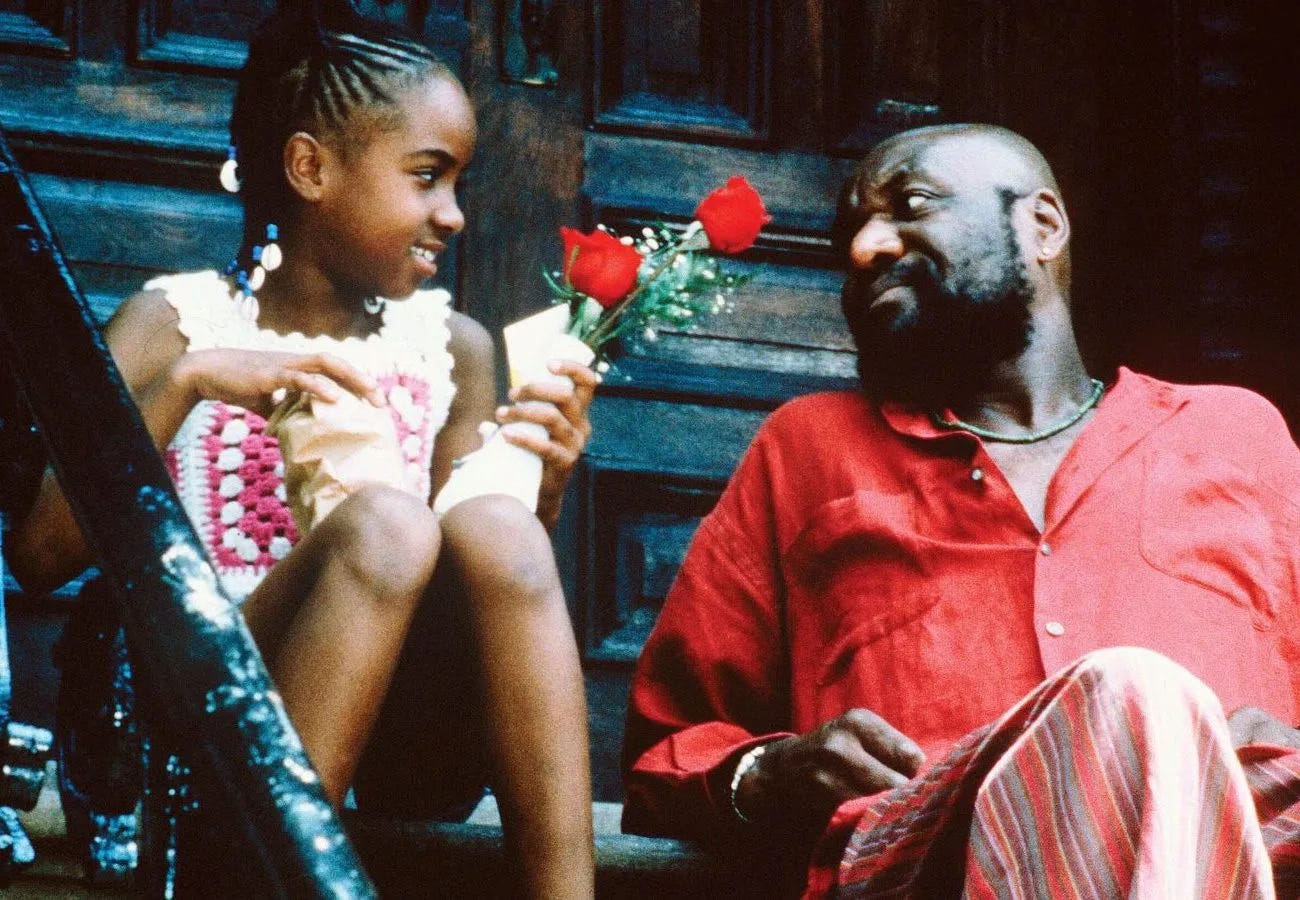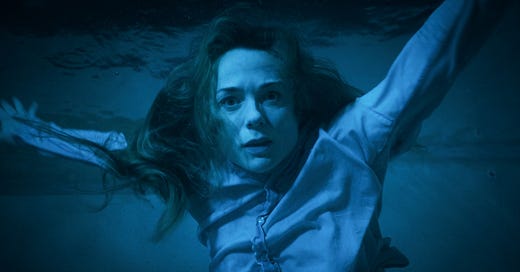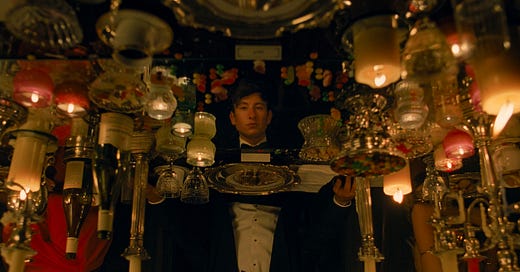
Netflix Will Learn the Wrong Lessons from 'Emilia Pérez'
Laying the campaign's problems at the feet of Karla Sofía Gascón misses the larger issues affecting the company's Oscar woes.
With the Oscars less than a week away, the chances of a Best Picture win for Emilia Pérez, the movie with the most nominations this year, have all but evaporated. Of its thirteen nominations, it will likely win Best Supporting Actress for Zoe Saldaña and Best Song for “El Mal,” but that’s it. It’s now unlikely to even win Best Foreign Language feature, with the Oscar probably going to (the far superior) I’m Still Here.
For some, the culprit for the campaign’s collapse seems obvious: lead actress Karla Sofía Gascón. Her vile tweets made the film toxic, and Netflix was caught flat-footed by the idea that a trans person could be bigoted. The thinking will go that if not for Gascón, the film would have provided Netflix with its first Best Picture win.
I’m not so sure.
Netflix is in a tricky position because they want to position streaming as the future of movies. They have little to no interest in the theatrical model, and if they could land a Best Picture win, it would help legitimize their platform as one embraced by Hollywood not only financially, but artistically. While a streaming movie won an Oscar in 2022 with AppleTV+’s CODA, that was more of an anomaly—a comforting movie people could watch at home during the COVID-19 pandemic. If Netflix, the biggest streamer, could get one of their movies a Best Picture Oscar, then it would signal that the “best” movies not only come from Netflix but that you don’t need to leave your house to watch them.
Netflix doesn’t throw millions upon millions of dollars at prestige directors for artsy movies because they appreciate art. They want to disrupt how and where prestige films get made and distributed. While this has worked out nicely for established directors who need a lot of money to get a passion project made (e.g. The Irishman, Roma, Mank), it still hasn’t changed perceptions of Netflix as “The place to watch something while you fold laundry and occasionally a good TV show that you binge over a weekend.”
The streamer has their math backward if they think that winning the Best Picture Oscar will get people to take their movies seriously and make them a hub for artistically rewarding pictures. Why do films like Everything Everywhere All at Once or Oppenheimer have an edge when it comes to winning Best Picture? In the case of the former, it was an offbeat picture that slowly built an audience via word-of-mouth to become A24’s second-highest-grossing movie of all time. In the case of Oppenheimer, it made a billion dollars and the movie was incredibly popular both with critics and audiences from the outset.
Either way, Oscar voters could look at these movies and have their legitimacy validated through visible trends. That’s not to say that no other movies in 2022 or 2023 met that criteria, but for all the nominations Netflix can buy (nine nominations for 2022’s All Quiet on the Western Front and seven nominations for 2023’s Maestro), there’s no way to verify any kind of popular response beyond social media buzz, and given the speed of social media, you can’t hope to sustain that for a months-long campaign. You need the sturdier foundation of a popular response. It’s not even that you need to dominate at the box office, but there needs to be a clear, positive reaction from audiences. This year’s Best Picture frontrunners, Anora and Conclave, both did respectable numbers at the box office. We’ll have no idea how Emilia Pérez performed until Netflix releases its second-half 2024 data in mid-2025.
Of course, Netflix could easily remedy this problem if they simply embraced a traditional theatrical release. Even a platform release like Anora where they start with a handful of theaters before building out to hundreds of screens nationwide would do the trick. Oscar voters are not hermetically sealed off from the world. While it would be nice to say, “Just judge the movie on its own merits,” voters are well aware of the history they’re creating. There are always examples of whiffs and easily-forgotten Best Picture winners, but I don’t blame Oscar voters for looking at any streaming film and thinking, “How do I know if other people responded to this when I don’t even know how many people watched it in the first place?”
But Netflix doesn’t want to go theatrical. Greta Gerwig basically had to twist their arm to make sure her upcoming adaptation of The Chronicles of Narnia: The Lion, the Witch, and the Wardrobe got an IMAX release. Netflix sees theaters not as vehicles for an appreciation of movies but as competitors. If that’s how they want to conduct business, then fine. But you can’t have it both ways where you want to think of your movies as disposable content available only on your home platform and also crave the prestige a Best Picture Oscar provides. Until they figure that out, they’ll continue to spend big on Oscar nominations with few wins to show for it. And when they lose they won’t be able to blame it on an actress’s bad tweets.
What I’m Watching

Last week I finally got around to watching Spike Lee’s 1994 semi-autobiographical film, Crooklyn. Watching Lee go from the towering biopic of Malcolm X to the intimacy of a coming-of-age story in 1973 Brooklyn is further proof of his incredible range, and while not every Lee movie works, there’s no question Crooklyn is one of his best.
What’s more, I think critics and audiences may not have known what to do with it in 1994. It’s one thing for a Black director to make a movie about one of the most important Black figures of the 20th century. That you can recognize with Oscar nominations. But it’s interesting that in 1994, we had the boomer nostalgia pill of Forrest Gump transporting audiences into the past in broad fashion (Remember Vietnam? Remember the March on Washington?) and that was a massive hit and Best Picture winner. Crooklyn also transports the audience back in time but does so with beautiful specifics that make this story come alive, and while maybe audiences would be more receptive to it now, it’s a shame it didn’t get more appreciation upon its release.
What I’m Reading
I started reading Say Nothing: A True Story of Murder and Memory in Northern Ireland by Patrick Radden Keefe, and only fifty pages in I’m riveted. There’s a true crime story about the abduction and murder of Jean McConville that kicks off the book, but Keefe quickly expands the narrative to create a look at The Troubles and how it affected the people in the North of Ireland.
What I’m Hearing
The great Roberta Flack passed away earlier this week at the age of 88. This sent me back to her amazing 1969 album First Take, which is an incredible work from start to finish.
What I’m Playing
I think I’m coming up to the end on Dredge, but who knows? I’ve discovered that the website How Long to Beat can be highly inaccurate. They say to be a completionist (so all sidequests and everything) takes nineteen hours. My friends, I have been driving that little trawler around for thirty hours, and I know for a fact I haven’t done all the sidequests. And it’s not like I’m bad at the game or anything. It’s a trawler! It moves around the ocean and fishes! How much game could there be? More than nineteen hours, I’ll tell you that.













